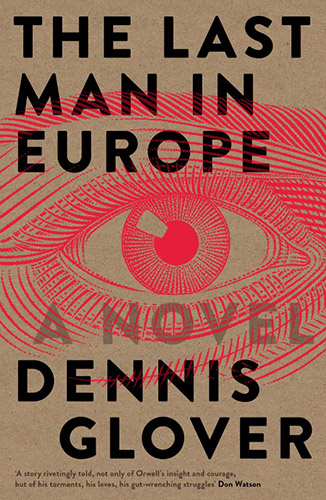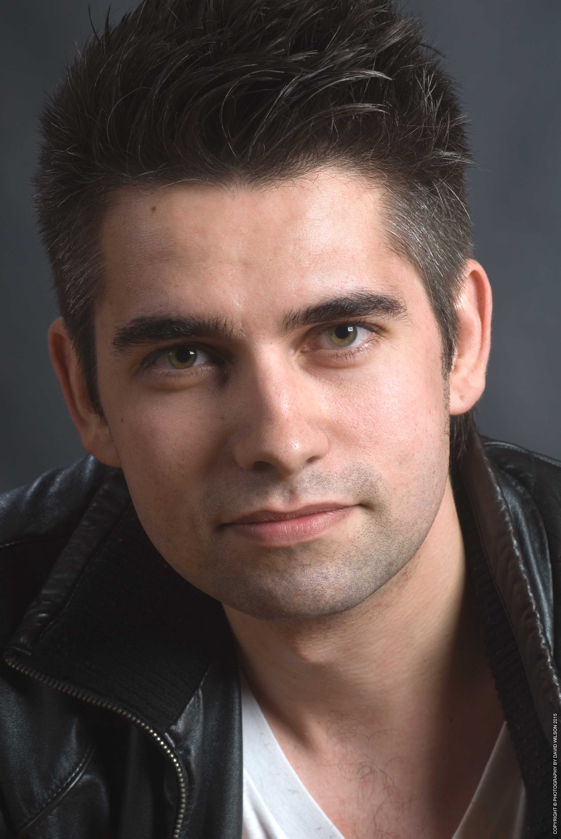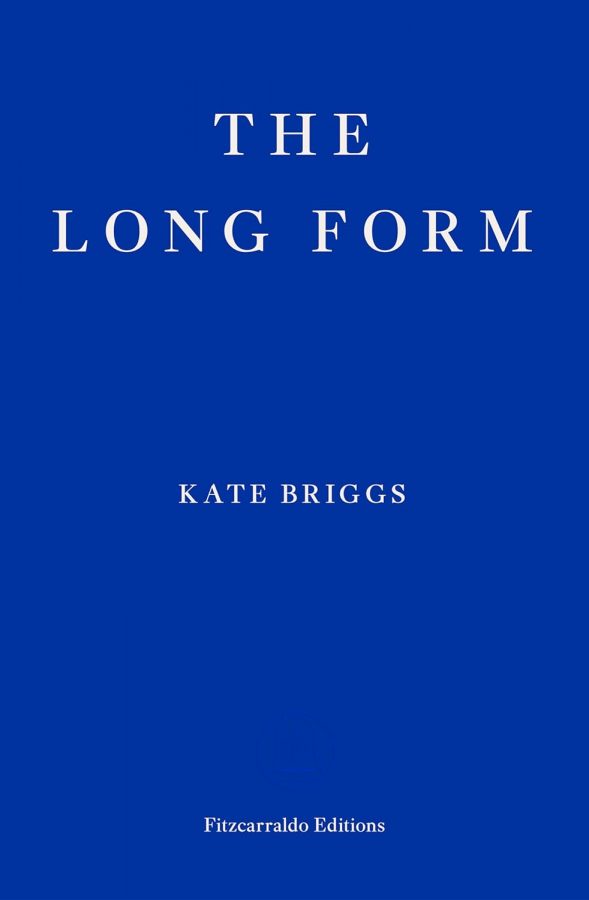In his will, George Orwell expressed clearly the wish that no accounts of his life be written. His widow and literary executor Sonia Brownell enforced the edict for a couple of decades, but the dam she built around Orwell’s memory was always going to be breached sooner or later. In the end, it was Brownell herself who appointed the first biographers: Malcolm Muggeridge, a close friend of Orwell’s whose research ultimately came to nothing; and then Bernard Crick, author of the first ‘official’ biography to be published, George Orwell: A Biography (1980), thirty years after the death of its subject. It had been Sonia Orwell’s intention that the four-volume Collected Journalism, Essays and Letters (1968), which she edited with Ian Angus, stand in for the biography her husband did not want written.
Orwell himself wrote several autobiographical essays, but was ambivalent about life writing. In ‘Benefit of Clergy’ (1944), a review of Salvador Dali’s Life, Orwell famously asserted that, ‘Autobiography is only to be trusted when it reveals something disgraceful. A man who gives a good account of himself is probably lying, since any life when viewed from the inside is simply a series of defeats.’ Orwell’s posthumously published reminiscence about his school days, ‘Such, Such Were the Joys’ (1952), is among his most anthologised pieces of autobiographical writing. Deemed too libellous to publish in Orwell’s lifetime, the essay can only really be said to be disgraceful in one respect: that, by wide agreement, events are fictionalised to the point of distortion, if not outright invention. (Brownell and Crick would fall out over the latter’s conviction that Orwell’s autobiographical writings were essentially untrue.)
Readers cling, I think, to the fragments of life writing left by Orwell because Orwell the man remains such a mysterious, partial figure. We know him, primarily, through his political writings, and while it is true, as his friend Cyril Connolly observed, that a sense of Orwell’s personality imbued everything he wrote, lacunae remain. No record of Orwell’s voice survives and no film recordings of him are known to exist either. The few dozen photographs we have of the writer are of variable quality, and seem to have worn away further still through overfamiliarity. There’s Orwell with his dog on the beach at Southwold in 1932; Orwell staring quizzically out from his 1943 press card portrait; Orwell in his Islington flat in 1945, a hand-rolled cigarette dangling from his mouth, helping adopted son Richard into his shoes. Orwell’s expression in these images – stoical, impassive – barely changes, a little more grimly determined here, the faint trace of an ironic smile there.
In the absence of film or audio recordings of Orwell, and given the thinness of the photographic record, writers and filmmakers have been forced to extemporise. A 2003 BBC Four docudrama, George Orwell: A Life in Pictures, cast the lugubrious Chris Langham as Orwell, the actor playing Orwell in a series of fictitious archive interviews scripted from the writer’s oeuvre. It felt like an exercise in nostalgia, a re-presentation of an abstracted, already determined idea of Orwell, one made familiar, by a kind of cultural osmosis, through his books. What readers lack is the chance to move beyond those grainy photographs, to enter into Orwell’s head, to establish, as Orwell biographer D. J. Taylor writes in Orwell: The Life (2003), ‘not only what can be said about him and the world he inhabited, but what he can tell us about ourselves.’
Orwell has appeared as a character in a novel at least once before the appearance of Dennis Glover’s The Last Man in Europe, published in 2017 by Black Inc. David Caute’s Dr Orwell and Mr Blair (1994) is a semi-fictional account of how Orwell came to write Animal Farm. The book’s narrator is a 12-year-old farmhand, Alex, who befriends Mr Blair (Orwell’s birth name) only to end up feeling betrayed by Dr Orwell, Blair’s Jekyll-like shadow, who uses his experiences of the farm to inform his book, filching the names of the animals – Boxer, Napoleon, and the rest – and caricaturing the farm’s human inhabitants. At one point, Orwell witnesses Alex whipping a carthorse along a path, an incident that gives rise to his notion that the upper classes exploit the proletariat in much the same way that humans exploit animals.
The idea of writers as self-appointed hoarders and sifters of experience, both their own and others’, is not new, and is often articulated in unflattering terms: thieving, vampirism, violation. In Dr Orwell and Mr Blair, Alex describes the Doctor as ‘the body-snatcher, the prowling spy of the night… offering his corpses to the world as miracles of surgical dissection.’ Cribbing details from everyday life as well as the books he reviewed, Orwell’s skill as a writer was necessarily one of observation rather than invention. His early novels – later disowned by Orwell himself, except for their capacity to ‘bring in a few pounds for [his] heirs’ – sit muted and soft-edged next to his vivid books of reportage. Orwell required a pre-constructed world to describe or, in the case of his later, successful novels, strip the textures from in order that he could map them onto fully formed political ideas. As James Wood observes:
He transferred to the description of these existent fictional worlds the talent he lacked as a novelist of nonexistent worlds; he needed a drystone wall already up, so that he could bring his mortar to it and lovingly fill in the gaps… Orwell needed the prompt of the real to speak as a writer.
Dennis Glover has written two books about George Orwell. The first, Orwell’s Australia, was published in 2003 and is a work of non-fiction; the second, The Last Man in Europe, is a novel that takes its name from the working title of Nineteen Eighty-Four. Together, they illustrate what happens when one author fully assimilates both the spirit and style of another. Glover holds a doctorate in history from Cambridge University and was a speechwriter for both state and federal Labor members between 2007 and 2013. He knows the virtues of plain English and is a diligent student of Orwell – so he understands that the master’s achievement is not simply a matter of style, but also of moral and political commitment. (‘One ought to recognise,’ wrote Orwell in Politics and the English Language, ‘that the present political chaos is connected with the decay of language, and that one can probably bring about some improvement by starting at the verbal end’.)
Glover’s novel, his first, tracks the composition of Nineteen Eighty-Four from March 1935 to the book’s publication in June 1949, less than a year before Orwell’s death from tuberculosis at the age of forty-six. (Glover speculates that the exact cause of Orwell’s death was an accidentally administered overdose of then-new anti-TB drug streptomycin, which had had to be obtained arduously from America.) Glover writes in crisp, dry prose in a psychological-realist mode. Unlike Dr Orwell and Mr Blair, there are no post-modern flourishes here. Rather, Glover uses the historical record to unpack the mythology that still surrounds the composition of Nineteen Eighty-Four, that is, Orwell’s heroic struggle against terminal illness to complete his magnum opus. Glover’s art lies in the careful curation of his researches, and in the fleshing out of their significance. Where the facts are unknown, Glover extrapolates from Orwell’s essays and diaries, a device that might jar but for the fact, observed by Glover in his author’s note, that ‘many contemporaries commented on Orwell’s habit of rehearsing the contents of his forthcoming writings in discussions with friends and colleagues’.
Intriguingly, Glover also uses the novel to hazard a contribution to Orwell textual scholarship, evoked in the book’s epilogue and elaborated on in a note in Black Inc.’s new edition of Nineteen Eighty-Four, published alongside Glover’s novel. In the final chapter of Nineteen Eighty-Four, Winston Smith sits in a café playing chess after having been tortured into betraying his lover, Julia. What’s left of his mind drifts, and he traces in the dust of the table ‘2 + 2 = ’. The unfinished equation – a symbol of Smith’s not quite total capitulation to Big Brother, and therefore a gesture of incipient hope that totalitarianism could be resisted – appeared in almost all British and Commonwealth editions of the novel (with the exception of the first printing) published between 1949 and 1987. According to Glover, the original marked-up typescripts, the corrected proofs, and all US editions contained the equation in its completed form – ‘2 + 2 = 5’ – the inference being that Smith is no longer capable of thoughtcrime, and that the Party’s domination over everything, including what Smith calls ‘the spirit of Man’, is absolute..
Glover traces the appearance and disappearance of the ‘5’ across subsequent editions, arguing against the prevailing wisdom, established by editor Peter Davison in his authoritative Complete Works (1987), that the number’s vanishing was the result of a typesetter’s error during the preparation of the 1951 second edition. Instead, it is Glover’s contention – prompted by the chance find of a rare second impression of the first edition in a second-hand bookshop in England – that Orwell himself insisted on the change just weeks before he died. It’s a claim Glover argues is consistent with Orwell’s belief, expressed in letters to various friends and colleagues, that his illness had resulted in a more pessimistic book than he had intended and, moreover, that democratic socialism would ultimately defeat totalitarianism.Certainly, this is a view articulated in several of Orwell’s political essays of the period, most notably ‘Second Thoughts on James Burnham’ (1946). Glover’s argument is appealing – in his preamble to Nineteen Eighty-Four, he notes the tantalising Orwellian resonance of this possible rewriting of history – but it is unusual for a novelist to make such a foray into textual scholarship. Indeed, Glover himself recognises that Davison’s Complete Works is ‘an extraordinary piece of scholarship unlikely to be surpassed for any modern writer any time soon’. ‘Readers,’ he sagely concludes, ‘may of course decide for themselves.’
Glover winds through The Last Man in Europe any number of James Wood’s ‘prompts of the real’, configuring Orwell’s life up until 1947 – the year he holed himself up on Jura, a remote island in Scotland’s Inner Hebrides – as a sort of long apprenticeship for the writing of Nineteen Eighty-Four. Sketches of the inspirations – some imagined, most grounded in Orwell’s letters, diaries, and essays, or else those of his contemporaries – that shaped the composition of Nineteen Eighty-Four abound. The topography of Orwell’s novel, as D. J. Taylor notes, is closely based on ‘the three or four square miles centered on Oxford Street and its immediate hinterlands’ – within which Orwell worked for the BBC as a propagandist during the war – a place Glover evokes in detail. The BBC, Glover writes, is a subsection of the Ministry of Information – ‘MINIFORM in telex jargon,’ prefiguring Orwell’s invented language Newspeak – which is run by Brendan Bracken, known by staff as ‘B.B’. ‘Orwell, though,’ Glover writes, ‘had never seen B.B. and sometimes doubted whether the fellow actually existed.’ We find, on the same page, the broken lift and ‘smell of boiled cabbage’ that Orwell evokes early on in his novel.
Likewise, Orwell’s political awakenings are flagged – in Spain, especially, during the Civil War, where in 1937 a disenchanted Orwell encountered mass propaganda for the first time, including in the form of a Spanish Communist Party poster, with its image of a ‘boot stamping on all who resist, forever’. But so too are countless other incidents and observations the shadows of which, by Glover’s reckoning, fell onto Orwell’s manuscript. In the novel’s opening chapter, Orwell’s future wife, Eileen O’Shaughnessy, patronises the bookshop Orwell works at:
She had fine features and swift movements and was distinctly attractive but rather intimidating – the sort who was probably head girl at a school where they played a lot of hockey. He pictured her as a schoolgirl, her sports outfit gathered tightly at the waist by a house sash, lending the plain costume an inviting dimension, the way a certain type of schoolgirl always managed.
Compare this description to the scene in Nineteen Eighty-Four in which Julia leads Winston into the countryside where they can safely make love:
Winston followed, still clasping his bunch of flowers. His first feeling was relief, but as he watched the strong slender body moving in front of him, with the scarlet sash that was just tight enough to bring out the curve of her hips, the sense of his own inferiority was heavy upon him. Even now it seemed quite likely that when she turned round and looked at him she would draw back after all.
In the same chapter, Glover speculates it was Eileen who gifted Orwell the idea for the ‘shabby little room’ above a shop where a couple could conduct an affair in secrecy, a plot element that turns up in both Nineteen-Eighty Four and the earlier Keep the Aspidistra Flying:
‘I have to say, I can’t believe an enterprising young writer couldn’t invent some sort of bolthole in which to give this coconut and his peach a little privacy of an afternoon. Now, let me think…’ She scanned the shop, fixing her eyes on the staircase at the rear. ‘Maybe a room, upstairs from the shop where he works?’
Such moments produce jolts of satisfaction in the reader. There is a pleasure too, in Glover’s astute treatment of his subject’s writing process, even as he exposes Orwell’s limitations as a novelist. The book’s prologue finds Orwell on Jura, in April 1947, beginning work on the first draft of what will become Nineteen Eight-Four:
A Clergyman’s Daughter and Keep the Aspidistra Flying he had opened with the ringing of clocks, and Coming Up for Air with George Bowling nipping out of bed. It was an easy way in – perhaps too easy, but he could get it right in the next draft.
In characterising Orwell’s trajectory towards the writing of Nineteen Eighty-Four as pre-determined, there is a sense in which Glover narrows rather than broadens our understanding of the man as a writer and thinker. Orwell was a welter of paradoxes and ambiguities. An Eton-educated political radical who longed for revolution in his native England, he was also in many ways a social conservative whose writings on matters of what we would now call identity politics could be both forward-thinking and regressive. His literary tastes could range just as widely, from the kind of pulp fiction celebrated in the 1946 essay ‘Decline of the English Murder’ to Henry Miller – praised in another essay, 1940’s ‘Inside the Whale’ – and James Joyce (‘when I read [Ulysses] and then come back to my own work,’ Orwell noted in a letter as he wrote A Clergyman’s Daughter, ‘I feel like a eunuch who has taken a course in voice production and can pass himself off fairly well as a bass or a baritone, but if you listen closely you can hear the good old squeak just the same as ever’). What is left out in Glover’s portrayal is this Orwell, ‘a randy goat,’ in Barry Hill’s words, ‘wanting to get out of convention exactly in the way of Miller’s carnal fictions.’
Similarly, Orwell’s fraught relationship with the ‘scientific romances’ of H.G. Wells – a formative influence later, in qualified fashion, disavowed, as Glover shows in a rather stilted exchange between Orwell and a portentous, elderly Wells over a wartime dinner – takes precedence over Nineteen Eighty-Four’s more telling literary precursors. Glover doesn’t make much, for example, of Orwell’s debt to Yevgeny Zamyatin’s We (originally published in English in 1924), favourably reviewed by Orwell in Tribune a year before he started work on his own dystopian novel. Orwell drew on We for his plot, characters, and even denouement, but there are other echoes which aren’t heard in The Last Man in Europe: of Jack London’s The Iron Heel (1908) (‘a very remarkable prophecy of the rise of Fascism,’ thought Orwell) and of Arthur Koestler’s Darkness at Noon (1940), an obvious influence on Orwell’s depiction of Winston Smith’s torture in Room 101.
Glover writes in outline of the complexities of Orwell’s character, and his times. Orwell’s coterie – his friends and publishers, and his wives, first Eileen and then Sonia – appear as not much more than ciphers. But there is an artful economy to it all, driven by Glover’s talent for dramatic compression. There are moments that ring with emotional force as the gap between reader and subject narrows. The chapter depicting the effect of Eileen’s sudden death on Orwell is moving: ‘He remembered what they had said to each other in Barcelona: to remain true to each other, to stay human in spite of everything, that was all that mattered.’ Glover depicts a heartbroken Orwell poring over her old letters, and revisiting one of her final injunctions to him: Stop living the literary life and become a writer once more. Less than a year later, in mid-1946, Orwell has relocated to Barnhill, the windswept, dilapidated farmhouse on Jura, in between bouts of convalescence in London.
There is great pathos in Glover’s description of Orwell’s increasingly onerous treatment schedule (which in itself, Glover suggests, will end up transmuted into Nineteen Eighty-Four’s scenes of Winston’s torture) and in his unsentimental account of Orwell’s efforts, against the advice of doctors, to complete his manuscript. Glover depicts, harrowingly, Orwell having a coughing fit during this time, the pages splattered with what Orwell takes at first to be red ink, then realises is his own blood – as literal a rendering imaginable of the dictum, usually attributed to Hemingway, that to write ‘all you do is sit down at a typewriter and bleed’. Book reviewing is easy, Glover’s Orwell tells Bruce Dick, his lung surgeon, ‘it’s writing novels that kills you.’
On his arrival at Barnhill, Glover’s Orwell reflects on the unsatisfying sum of his life’s work:
Carefully he set the lid down at his feet, and looked at the shiny black Remington with its worn, glass-topped keys, relieved it had survived the journey. How many words must it have typed? Eight books – all but Animal Farm complete failures. Some seven hundred reviews, mostly of pure tripe for obscure socialist and anarchist journals, but they’d kept him alive. Around two hundred and fifty essays – including a few he could actually feel proud of. And hundreds upon hundreds of letters. Four million words at the very least.
Had Orwell not lived long enough to complete Animal Farm and Nineteen Eighty-Four – if, say, the fascist’s bullet that had struck him in the throat during the Spanish Civil War had not missed Orwell’s carotid artery, or if he and Eileen had been captured by the Soviet secret police in Barcelona once Orwell’s militia, the POUM, had been supressed – Britons would vaguely remember Orwell as a middling novelist, old-fashioned even by the standards of the 1930s, and an above-average essayist and literary critic. In the United States, where Orwell’s standing is largely due to his two late works of fiction, it’s likely his name would be a footnote. It wasn’t, Orwell himself noted, until Animal Farm that he ‘tried’ – and, one might add, succeeded – ‘with full consciousness of what I was doing, to fuse political purpose and artistic purpose into one whole.’ Glover makes it clear that Orwell saw in Nineteen Eighty-Four – however much sounder he felt it could have been had he more time and better health – the completion of this project. If the elegant allegory of Animal Farm served to explicate a precise political problem then Glover posits that Orwell conceived of Nineteen Eighty-Four as altogether more visceral, an opportunity to:
…get across how present-day politics made life feel: how it changed the sensation of a razor blade on your skin, the meaning of a knock on the door, your capacity for love and loyalty. The ideologists and the managerialists couldn’t tell you those things, especially the last. Love and loyalty could never be understood through statistics, only through experience. The doomed love affair would explain everything; he had to get it right.
The Last Man in Europe is a welcome addition to the vast literature on Orwell because it achieves something similar: the scratching away of political cant to reveal the human cost of struggle against unenviable odds. Orwell, so often reduced to the much-abused eponym that bears his name, is rendered a vivid figure in Glover’s account, one that – for all its fixity of purpose – illustrates the how the novel can register the complexity of lived experience. ‘Orwellian,’ Geoffrey Nunberg writes, ‘doesn’t have anything to do with Orwell as a socialist thinker, or for that matter, as a human being.’ As sections of the right continue to try to claim Orwell, and the humbug and quasi-authoritarianism of the Trump administration boosts Nineteen Eighty-Four up bestseller lists, Glover’s unabstracted Orwell is a gift.
David Caute, Dr. Orwell and Mr. Blair, Weidenfeld & Nicolson, London 1994.
Chris Durlacher (dir.), George Orwell: A Life in Pictures, BBC 2003.
Dennis Glover, Orwell’s Australia, Scribe, Victoria 2003,
– Nineteen-Eighty Four (introduction), Black Inc., Victoria 2017.
Barry Hill, ‘George Orwell’s Nineteen Eighty-Four revisited by Dennis Glover’, The Australian, 15 July 2017.
Geoffrey Nunberg, ‘Simpler Terms; If It’s ‘Orwellian,’ It’s Probably Not’, The New York Times, 22 June 2003.
George Orwell, ‘Politics and the English Language’, Orwell and Politics, ed. Peter Davison, Penguin, London 2001.
– ‘Benefit of Clergy: Some Notes on Salvador Dali’, The Collected Essays, Journalism and Letters of George Orwell Volume 3: As I Please, eds. Sonia Orwell and Ian Angus, Penguin, London, 1970
D.J. Taylor, Orwell: The Life, Vintage, London 2004.
James Wood, ‘A Fine Rage’, The New Yorker, 13 April 2009.







